RTG: prosaic heat and electricity for spacecraft
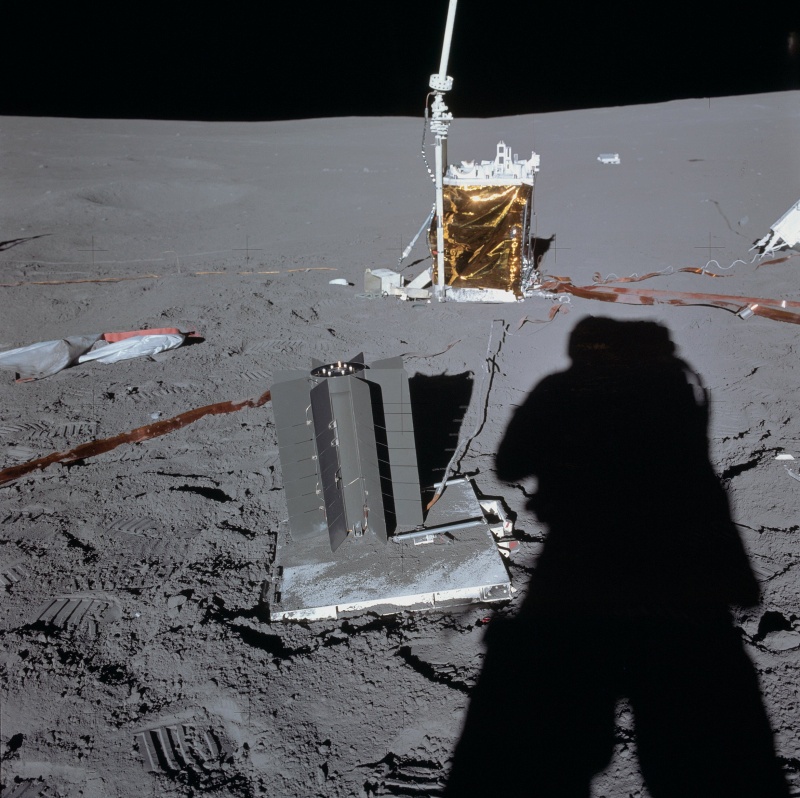
It so happened that in the series “Peaceful Cosmic Atom” we move from fantastic to common. Last time we talked about power reactors, the obvious next step is to talk about radioisotope thermoelectric generators. Recently, Habré had an excellent post about the RTG probe "Cassini" , and we will consider this topic from a broader point of view.
Process physics
Heat production
Unlike a nuclear reactor, which uses the phenomenon of a chain nuclear reaction, radioisotope generators use the natural decay of radioactive isotopes. Recall that atoms are made up of protons, electrons, and neutrons. Depending on the number of neutrons in the nucleus of a particular atom, it may be stable, or it may show a tendency to spontaneous decay. For example, a cobalt 59 Co atom with 27 protons and 32 neutrons in the nucleus is stable. Such cobalt has been used by mankind since the days of ancient Egypt. But if we add one neutron to 59 Co (for example, by placing “ordinary” cobalt in an atomic reactor), then we get 60 Co, a radioactive isotope with a half-life of 5.2 years. The term “half-life” means that in 5.2 years one atom will decay with a probability of 50%, and about half of the hundred atoms will remain. All "ordinary" elements have their isotopes with different half-lives:
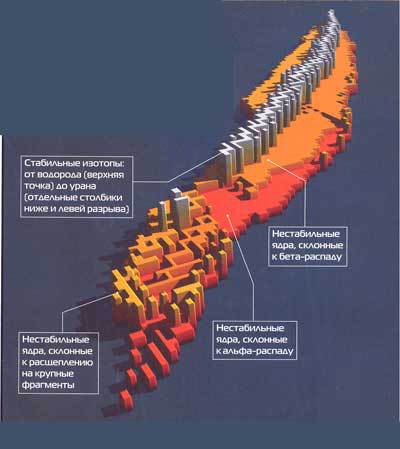
3D isotopes map, thanks LJ user crustgroup for the picture.
')
By selecting an appropriate isotope, one can obtain an RTG with the required service life and other parameters:
| Isotope | Method of obtaining | Specific power, W / g | Volume power, W / cm ³ | Half life | Integrated isotope decay energy, kWh / g | Isotope working form |
|---|---|---|---|---|---|---|
| 60 Co (cobalt-60) | Reactor irradiation | 2.9 | ~ 26 | 5.271 years | 193.2 | Metal, alloy |
| 238 Pu (plutonium-238) | atomic reactor | 0.568 | 6.9 | 86 years | 608.7 | Plutonium carbide |
| 90 Sr (strontium-90) | fission fragments | 0.93 | 0.7 | 28 years | 162,721 | SrO, SrTiO 3 |
| 144 Ce (cerium-144) | fission fragments | 2.6 | 12.5 | 285 days | 57,439 | CeO 2 |
| 242 Cm (curium-242) | atomic reactor | 121 | 1169 | 162 days | 677.8 | Cm 2 O 3 |
| 147 Pm (promethium-147) | fission fragments | 0.37 | 1.1 | 2.64 years | 12.34 | Pm 2 O 3 |
| 137 Cs (cesium-137) | fission fragments | 0.27 | 1.27 | 33 years | 230.24 | Cscl |
| 210 Po (polonium-210) | bismuth irradiation | 142 | 1320 | 138 days | 677.59 | alloys with lead, yttrium, gold |
| 244 Cm (curium-244) | atomic reactor | 2.8 | 33.25 | 18.1 years | 640.6 | Cm 2 O 3 |
| 232 U (U-232) | thorium exposure | 8,097 | ~ 88.67 | 68.9 years | 4887,103 | dioxide, carbide, uranium nitride |
| 106 Ru (ruthenium-106) | fission fragments | 29.8 | 369,818 | ~ 371.63 days | 9,854 | metal, alloy |
The fact that the decay of isotopes takes place independently means that the RTG cannot be controlled. After loading the fuel, it will heat up and produce electricity for years, gradually degrading. Reducing the number of fissile isotope means that there will be less nuclear decays, less heat and electricity. Plus, the fall in electrical power will aggravate the degradation of the electric generator.
There is a simplified version of the RTG, in which the decay of the isotope is used only for heating, without generating electricity. Such a module is called a heating unit or RHG (Radioisotope Heat Generator).
Turning heat into electricity
As in the case of a nuclear reactor, the output we get heat, which must somehow be converted into electricity. To do this, you can use:
- Thermoelectric converter . By connecting two conductors from different materials (for example, chromel and alumel) and heating one of them, you can get a source of electricity.
- Thermionic converter . In this case, an electronic lamp is used. Its cathode heats up, and electrons get enough energy to “jump” to the anode, creating an electric current.
- Thermo photoelectric converter . In this case, a photocell operating in the infrared range is connected to the heat source. The heat source emits photons that are captured by the photocell and converted to electricity.
- Thermoelectric converter on alkali metals . Here, to convert heat into electricity, electrolyte from molten sodium and sulfur salts is used.
- Stirling engine is a heat engine for converting temperature difference into mechanical work. Electricity is obtained from mechanical work using any kind of generator.
Story
The first experimental radioisotope energy source was introduced in 1913. But only from the second half of the 20th century, with the proliferation of nuclear reactors, on which it was possible to produce isotopes on an industrial scale, RTGs began to be actively used.
USA
In the United States, the SNAP organization, which was already familiar to you from the previous post, was engaged in RTGs.
SNAP-1 .
It was an experimental RTG on 144 Ce and with a generator on the Rankine cycle (steam engine) with mercury as a coolant. The generator successfully worked 2500 hours on Earth, but did not fly into space.
SNAP-3 .
The first RTG that flew into space on the Transit 4A and 4B navigation satellites. The power output of 2 W, weight 2 kg, used plutonium-238.
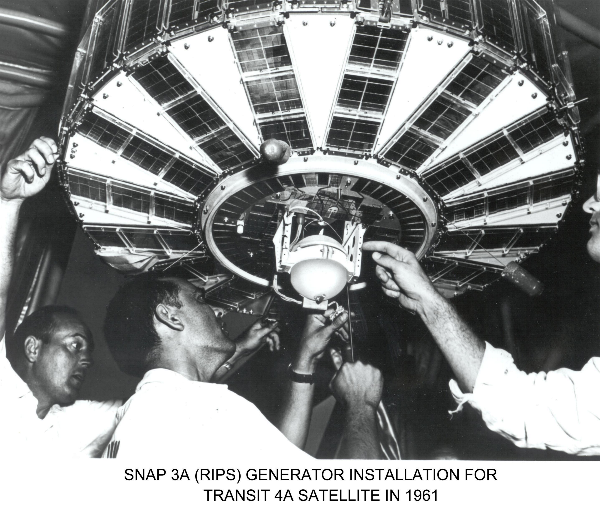
Sentry
RTG for meteorological satellite. The power output is 4.5 W, the isotope is Strontium-90.
SNAP-7 .
A family of ground-based RTGs for lighthouses, light buoys, weather stations, acoustic buoys and the like. Very large models, weight from 850 to 2720 kg. Energy capacity - tens of watts. For example, SNAP-7D - 30 W with a mass of 2 tons.
SNAP-9
Serial RTG for Transit navigation satellites. Weight 12 kg, electric power 25 watts.
SNAP-11
Experimental RTG for lunar landing stations Surveyor. It was proposed to use the isotope Curium-242. Electric power - 25 watts. Not used.
SNAP-19
The serial RTG was used in a variety of missions - Nimbus meteorological satellites, Pioneer probes -10 and -11, and Viking Martian landing stations. Isotope - plutonium-238, power power ~ 40 watts.

SNAP-21 and -23
RTGs for underwater use on strontium-90.
SNAP-27
RTGs for powering the scientific equipment of the Apollo program. 3.8 kg plutonium-238 gave an energy output of 70 watts. Lunar scientific equipment was turned off in 1977 (people and equipment on Earth demanded money, but they were not enough). RTGs for 1977 gave out from 36 to 60 W of electric power.
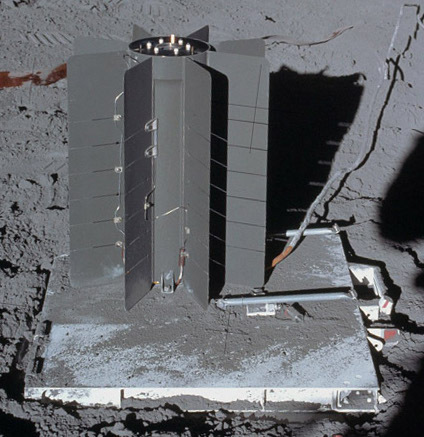
MHW-RTG
The name stands for “multi-repetitive RTG”. 4.5 kg. Plutonium-238 gave 2400 watts of heat and 160 watts of electrical power. These RTGs stood on the Lincoln Experimental Satellite (LES-8.9) and have been providing Voyagers with heat and electricity for 37 years. For 2014, RTGs provide about 53% of their initial capacity.
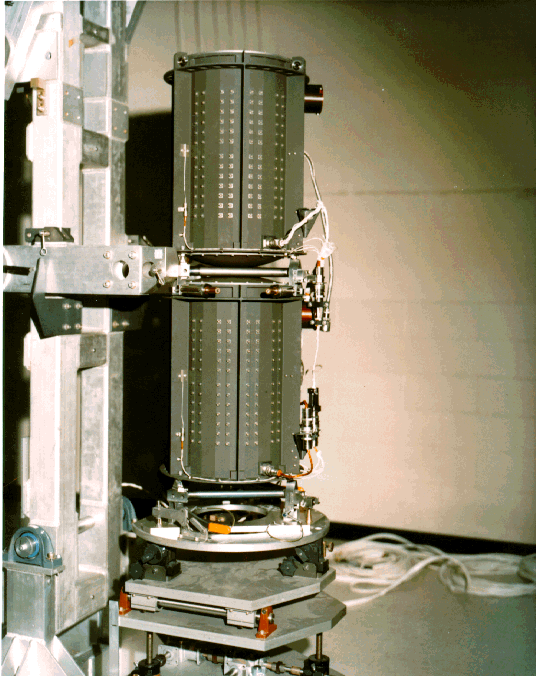
GPHS-RTG
The most powerful of cosmic RTGs. 7.8 kg of plutonium-238 gave 4400 W of thermal power and 300 W of electrical. It was used on the Ulysses solar probe, Galileo, Cassini-Huygens probes and flies to Pluto on the New Horizons.
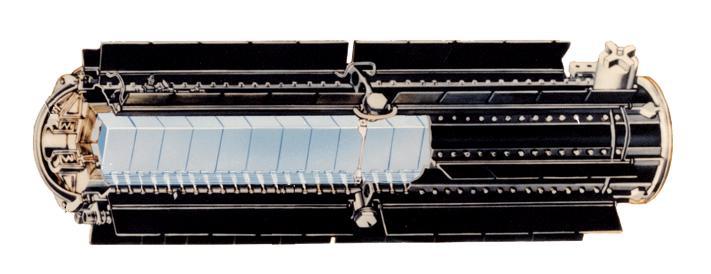
MMRTG
RTG for Curiosity. 4 kg of plutonium-238, 2000 W of thermal power, 100 W of electrical power.
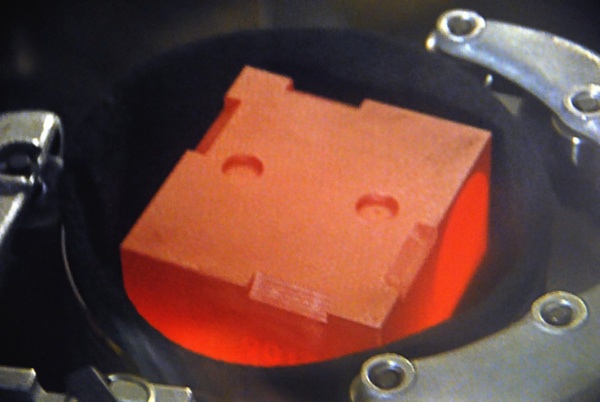
Warm plutonium
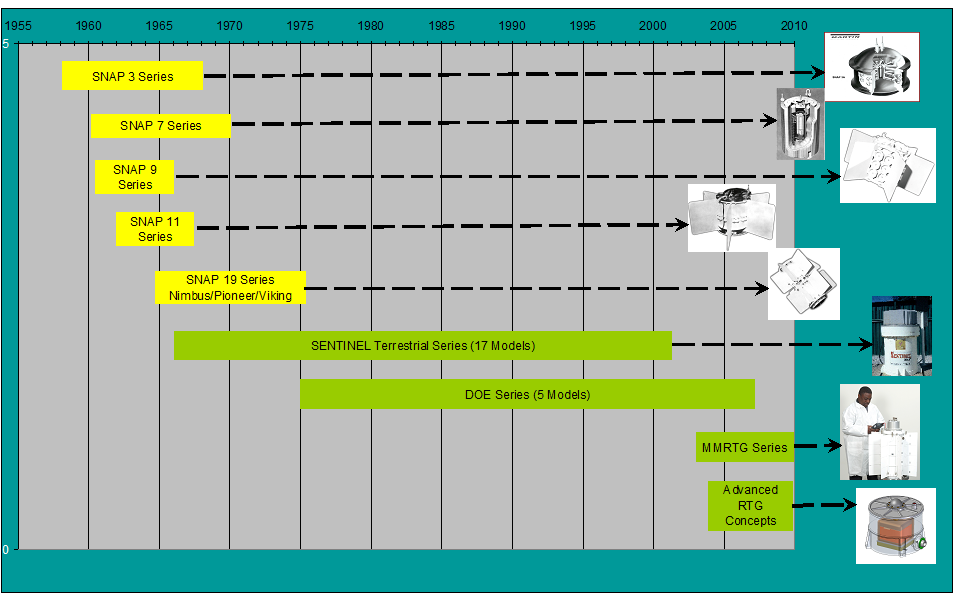
US RTGs with time reference.
Summary table:
| Title | Carriers (number on the device) | Maximum power | Isotope | Fuel weight, kg | Gross weight, kg | |
|---|---|---|---|---|---|---|
| Electric, W | Thermal, W | |||||
| MMRTG | MSL / Curiosity rover | ~ 110 | ~ 2000 | 238 Pu | ~ 4 | <45 |
| GPHS-RTG | Cassini (3) , New Horizons (1) , Galileo (2) , Ulysses (1) | 300 | 4400 | 238 Pu | 7.8 | 55.9–57.8 |
| MHW-RTG | LES-8/9 , Voyager 1 (3) , Voyager 2 (3) | 160 | 2400 | 238 Pu | ~ 4.5 | 37.7 |
| SNAP-3B | Transit-4A (1) | 2.7 | 52.5 | 238 Pu | ? | 2.1 |
| SNAP-9A | Transit 5BN1 / 2 (1) | 25 | 525 | 238 Pu | ~ 1 | 12.3 |
| SNAP-19 | Nimbus-3 (2), Pioneer 10 (4) , Pioneer 11 (4) | 40.3 | 525 | 238 Pu | ~ 1 | 13.6 |
| SNAP-19 modification | Viking 1 (2), Viking 2 (2) | 42.7 | 525 | 238 Pu | ~ 1 | 15.2 |
| SNAP-27 | Apollo 12–17 ALSEP (1) | 73 | 1,480 | 238 Pu | 3.8 | 20 |
USSR / Russia
In the USSR and Russia, space RTGs were few. The first experimental generator was RITEG “Lemon-1” on polonium-210, created in 1962:
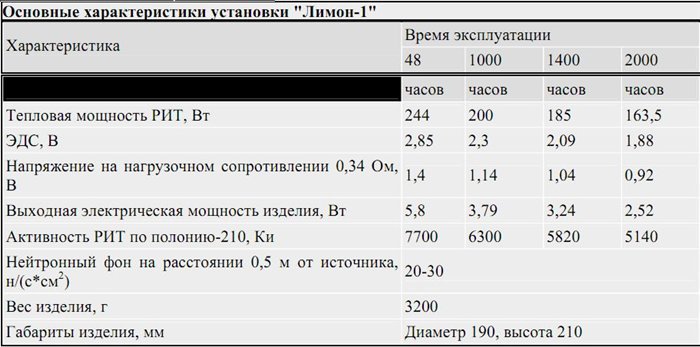 .
.The first space-based RTGs were Orion-1 with an electric power of 20 W on polonium-210 and launched on communications satellites of the Strela-1 series - Cosmos-84 and Kosmos-90. The heating blocks stood on the “Lunokhod” -1 and -2, and the RTG stood on the mission “Mars-96”:

At the same time, RTGs were very actively used in lighthouses, navigation buoys and other ground equipment - the BETA, RTG-IED series and many others.

Design
Almost all RTGs use thermoelectric converters and therefore have the same design:
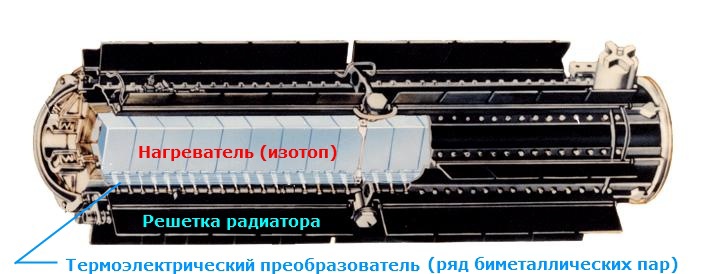
Perspectives
All flying RTGs are distinguished by very low efficiency - as a rule, the electrical power is less than 10% of the thermal one. Therefore, at the beginning of the XXI century, the ASRG project - a RTG with a Stirling engine was launched at NASA. It was expected to increase the efficiency up to 30% and 140 W of electrical power at 500 W thermal. Unfortunately, the project was stopped in 2013 due to budget overruns. But, theoretically, the use of more efficient heat-to-electricity converters can seriously improve the efficiency of RTGs.
Advantages and disadvantages
Advantages:
- Very simple design.
- It can work for years and decades, gradually degrading.
- It can be used simultaneously for heating and power supply.
- Does not require management and supervision.
Disadvantages:
- Rare and expensive isotopes are required as fuel.
- Fuel production is complex, expensive and slow.
- Low efficiency.
- Power is limited to hundreds of watts. The RTG of kilowatt electrical power is already poorly justified, megawatt is practically meaningless: it will be too expensive and heavy.
The combination of such advantages and disadvantages means that RTGs and heating units occupy their niche in the space energy industry and will preserve it further. They allow you to simply and efficiently heat and power interplanetary vehicles, but you should not expect any energy breakthrough from them.
Sources
In addition to Wikipedia used:
- The document "Cosmic nuclear energy: opening the last horizon . "
- The topic “Domestic RTGs” on “Astronautics News”.
- Domestic RTGs .
- Teledyne heritage .
- RTG on NASA website .
Source: https://habr.com/ru/post/231197/
All Articles